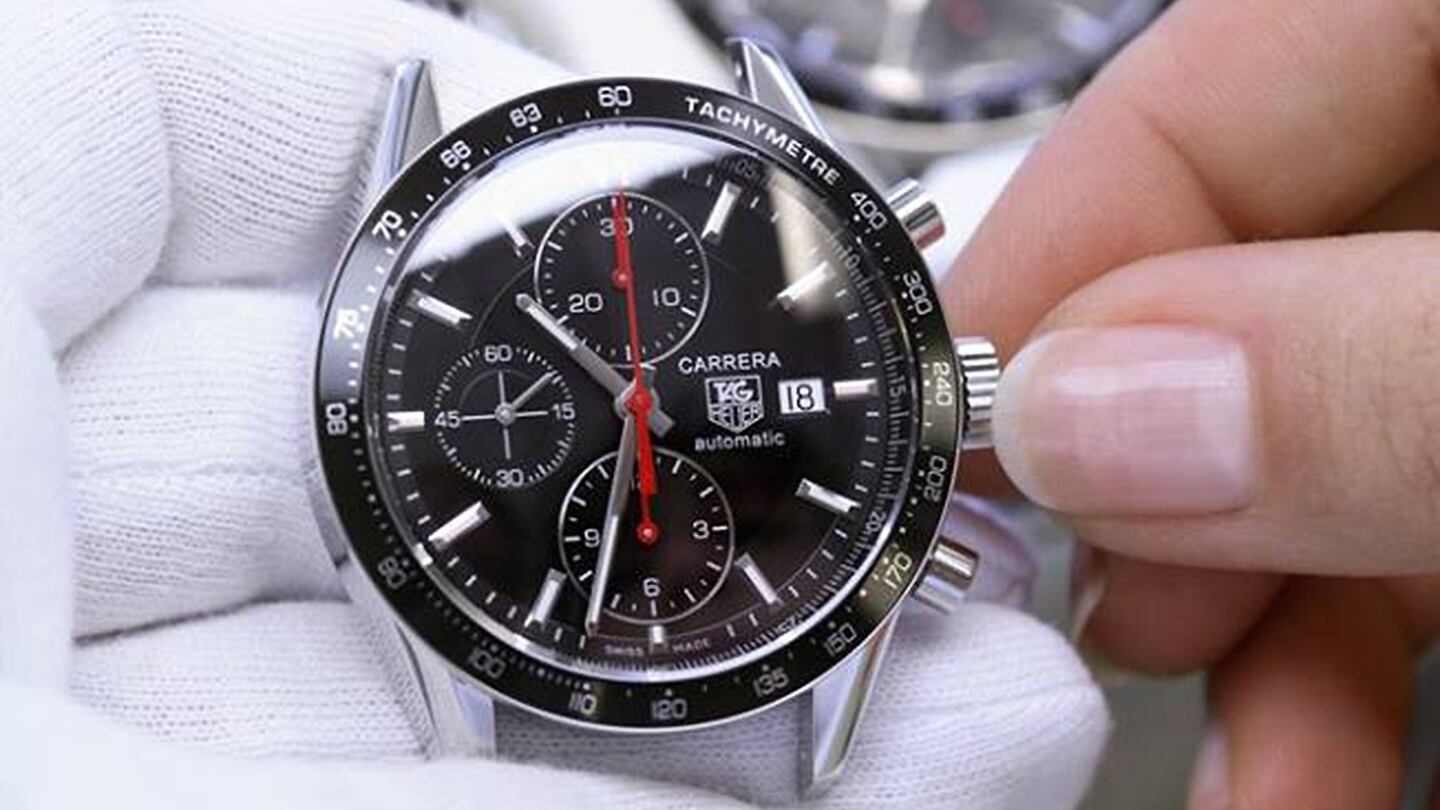
The Business of Fashion
Agenda-setting intelligence, analysis and advice for the global fashion community.

Agenda-setting intelligence, analysis and advice for the global fashion community.

ZURICH, Switzerland — As the Swiss watch industry prepares for fourth straight year of little to no growth, big producers such as Richemont, the owner of Cartier, are trimming back investment in production while some smaller rivals look for a buyer or risk going under.
The world’s biggest watch-producing country will register a 2 percent increase in shipments next year, according to the median estimate of 11 analysts in a Bloomberg survey. That’s the same rate of 2013 and 2014, a far cry from growth of about 20 percent in prior years.
“The motors are missing,” said Andre Bernheim, chief executive officer of Mondaine, an independent watchmaker that makes timepieces designed after Swiss railway clocks. “All the main regions in the world are showing problems, from the U.S., Europe, to China.”
The slowdown has forced smaller watchmakers like Parmigiani and Ulysse Nardin to cut jobs, while the owner of Maurice Lacroix, a brand that makes 90,000 watches a year, has been seeking a buyer since July. It also may draw a line between the companies that haven’t prepared for a slowdown and larger watchmakers such as Swatch Group AG and Cie. Financiere Richemont SA that have built up cash piles to protect themselves. Brands like Swatch’s Omega are pursuing younger shoppers, while TAG Heuer has developed a smartwatch.
ADVERTISEMENT
“Only the strong brands will survive,” said Zuzanna Pusz, an analyst at Berenberg. “Good brands that are financially struggling may be bought.”
The market has doubled since the turn of the century, fueled by demand from the Chinese, who have accounted for as much as half of spending on Swiss watches, according to Citigroup estimates. With China’s gross domestic product growth slowing to a six-year low, the industry has been in retreat. Exports declined 3.2 percent in the first 10 months of 2015, and data for November will be released Tuesday.
Swatch, the maker of Tissot and Longines watches, had cash of 1.2 billion Swiss francs ($1.2 billion) at the end of June, while Richemont reported a war-chest of 4.8 billion euros ($5.2 billion). The latter, whose brands include Jaeger-LeCoultre and Vacheron Constantin, has said it will reduce investment in manufacturing capacity next fiscal year as it tilts spending more towards distribution and its sales network.
Chinese sales were already suffering from a three-year campaign in that country to fight corruption and extravagant spending among government officials. Shipments of Swiss timepieces to greater China in the first 10 months this year slumped 19 percent, and are about 1 billion francs less than the annual level before the crackdown.
‘On Steroids’
“The Swiss watch market was on steroids, driven by the gifting policy in China at the time,” said Brian Buchwald, chief executive officer of Bomoda, a market researcher.
The industry, which accounts for a 10th of Switzerland’s exports, has also been hurt by the surging Swiss franc, which forced many brands to cut prices in export markets to stay competitive. The emergence of smartwatches from Apple Inc. started to weigh on demand for lower-end timepieces. In response, Omega put two James Bond-theme lines on sale, aiming to attract younger clientele. Further clouding the outlook, the Nov. 13 terrorist attacks in Paris threaten to keep tourists away from Europe.
“We’re not going to have huge growth like in the last 20 years,” said Edouard Meylan, chief executive officer of H. Moser & Cie., a Neuhausen am Rheinfall-based watchmaker whose roots date back two centuries. Reaching 2 percent growth in 2016 would be “quite good.”
ADVERTISEMENT
Growth Potential
Still, there is long-term growth potential in China and the U.S. as consumers become wealthier, according to Paul Swinand, an analyst at Morningstar Inc. “Nobody thought that Swiss watch exports could grow 20 percent forever,” he said.
Analysts predict 1 percent sales growth for Movado Group Inc. next year, according to data compiled by Bloomberg. That compares with 5 percent for Swatch. For Richemont’s coming fiscal year, which starts in April, analysts forecast sales increasing 10 percent.
“What we’re seeing is a normalization,” said Rene Weber, an analyst at Bank Vontobel AG. “We’ll never have boom years like we’ve had again.”
By Corinne Gretler; editors: Matthew Boyle, Thomas Mulier.
This week’s round-up of global markets fashion business news also features Latin American mall giants, Nigerian craft entrepreneurs and the mixed picture of China’s luxury market.
Resourceful leaders are turning to creative contingency plans in the face of a national energy crisis, crumbling infrastructure, economic stagnation and social unrest.
This week’s round-up of global markets fashion business news also features the China Duty Free Group, Uniqlo’s Japanese owner and a pan-African e-commerce platform in Côte d’Ivoire.
Affluent members of the Indian diaspora are underserved by fashion retailers, but dedicated e-commerce sites are not a silver bullet for Indian designers aiming to reach them.